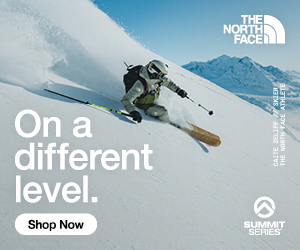Jeremy Saunders cuts through the marketing hype to give you all you need to know for your big purchase.
There is a huge amount of information, marketing terms and jargon and technologies on offer in the world of snowboards, leading to confusing and uninformed purchases.
So before you take your precious cash into the store or online there are some questions you need to ask yourself to ensure you don’t make any regret purchases.
What is my preferred style of riding and how will I be using the snowboard? Are you happy just cruising around on groomers? Do you want to ride natural terrain at high performance?
Will you be riding deep powder in the trees? Do you want to ride the park and progress your freestyle skills? Maybe you want to do it all?
Now ask yourself where will I be riding? Australian groomers, Japan powder, Whistler’s changing conditions?
How and where you like to ride will determine the technology and snowboard characteristics you will be needing.
Softer boards are more playful and easier to ride, making it easier and safer to learn new freestyle skills such as presses and butters. Soft boards can be a lot of fun to ride, but they lack stability when compared to stiffer boards. Stiffer boards generally have more “pop” for bigger ollies and more stability when carving and riding fast.
There are also two types of bases: sintered and extruded. Sintered bases are more porous, which means they absorb wax more efficiently. Sintered bases are faster and more durable — which means they are also more expensive. Extruded bases require less maintenance, but you sacrifice performance (speed).
Which direction?
Remember, a snowboard will either be directional or twin. A directional snowboard can ride both ways, but it rides more favourably in one direction. Directional boards are usually better suited to freeriding and riding in natural terrain, powder, trees etc.
Twin boards are symmetrical and ride both directions equally well. Twin boards are great for the park, or for those who have a more freestyle-oriented approach to snowboarding like riding switch and doing tricks. The vast majority of park boards on the market are twin or twin-like.
Size matters
Your weight and foot size also plays a part in choosing your board size. So make sure you know both.
It’s a common misconception that your height is most important, which is wrong. It’s how the board flexes which determines how it rides; downward force is what flexes the board, and this force is determined by your mass (weight).
Think about it. When you stand on a snowboard, does it know how tall you are? Of course not. It only knows how much force you are exerting on it.
Now we get to the board’s waist width, standard, mid wide or wide. If your board is too narrow for your boot size, your boots will dig into the snow when you turn. Also, if the board is too wide, it will make the snowboard feel “sluggish” and harder to turn. Always consider your boot size in relation to waist width before you make a purchase.
We need to talk about camber
There are so many different camber profiles on the market these days, which can make a first-time buyer very confused.
It’s important to understand there is no best camber profile. Each different profile provides various advantages, disadvantages, and riding characteristics. It really depends on the riding conditions and your particular riding style as to what suits you best.
I would also strongly recommend you try different camber profiles so you can feel the differences for yourself. If possible, try a range of boards at your resort’s demo days.

Camber is the most tried and tested camber profile. Until a few years ago, nearly all boards were camber. Camber provides stability, edge hold, and pop.
Advantages: Stable at speeds, great for carving, more pop, lots of energy (rebound) out of turns.
Disadvantages: Less forgiving, more ‘catchy’ when compared to other profiles, requires more effort to turn.
Rocker, also referred to as reverse camber, loosens the snowboard, giving it a ‘skatey’ feel. The first thing you will notice is they are much easier and quicker to turn. They are easier to press than cambered boards, so really good for learning flatground tricks. Another huge advantage is how well they float in powder.
Advantages: Easy turning, easy to press, forgiving (less ‘catchy’), floats great in powder
Disadvantages: Less stable, less pop, washes out easier.
Flat camber, also known as zero camber, is the middle ground between camber and rocker. Combining the benefits of both, flat camber is a versatile option and often used in park boards. They are super stable for riding rails, due to the flat surface between the bindings.
Advantages: Versatile, excellent for rails.
Disadvantages: Some riders say flat camber has a ‘dead’ and/or ‘damp’ feeling.

The hybrid camber profile seen above features rocker between the feet and camber directly underneath the feet. Many snowboard companies use this profile under various names, including Burton’s Flying V, Lib Tech’s C2 Banana, Nitro’s Gullwing Camber, and many others.
The benefit of this particular camber profile is versatility; it provides ‘looseness’ due to rocker between the feet and float in powder for the same reason. While camber under the feet gives edge hold and some degree of stability and pop, however not as much a full cambered board. Most riders say this particular hybrid profile feels more like a rockered board than a cambered board.
Advantages: Versatile, loose feel and easy turning, floats well in powder, provides better edge hold and pop than full rocker.
Disadvantages: Can feel unstable on rails, not as stable at speeds as full camber.

The second hybrid camber profile seen above features camber between the feet and rocker at the nose and tail of the board. YES Snowboards is one brand which regularly uses this particular camber profile in their range of boards, under the name CamRock.
The benefit of this particular camber profile is versatility once again; it provides stability, edge hold, and pop due to camber between the feet. Rocker at the nose and tail brings in the contact points, making turn initiation quicker and easier than a full cambered board.
The rocker also makes it easier to press and provides additional float in powder. Most riders say this particular hybrid profile feels more like a cambered board than a rockered board.
Advantages: Stability of camber between the feet, while still having a looser feel with additional float when compared to a full cambered board.
Disadvantages: Can feel ‘washy’ at the nose and tail.

‘Powder Rocker’ or ‘S Rocker’ as it’s commonly referred to, is often seen in dedicated freeride and powder boards. Most the boards utilising this camber profile have a setback stance, with the rider’s stance being somewhat centred over the camber section at the back of the board. This provides stability underfoot, while the significant rockered nose provides excellent float in powder and quick turning (think tight powder lines through trees).
As the rider exerts force through the board, the camber section flattens, causing the nose to lift up even further for increased float in powder. It goes without saying that this camber profile doesn’t ride switch very well.
Advantages: Specialist powder profile for excellent performance in powder.
Disadvantages: Not versatile, doesn’t ride switch well.
I recommend making a profile on yourself based on all the information above and taking that profile in to the store or searching online for a board that matches your specific profile. You can always email stores for recommendations too.
If you need any more advice, don’t hesitate to hit me up on the Boardworld Forums where you can also chat to fellow riders and peruse a selection of snowboards on offer.
Jeremy Saunders is snowboard obsessed. He is the founder of Australia’s premiere go to boardsports community and online store, Boardworld. Follow them on Facebook, Twitter, Instagram and YouTube.




































The term “flat camber” is oxymoronic, and therefore incorrect and inappropriate.
Although there’s some slight variance in the meaning of the word “camber”, it universally refers to an element of curvature – and a curve, by its very nature, can not be “flat”.
Any given section of a snowboard’s bend profile can be “flat” or “cambered”, but NOT both.
Technically you’re right, but a lot of brands still use the term “flat camber”. This article aims to explain the terms often used marketing material. But yes, “flat” or “zero camber” is more accurate. Valid point.
Thanks Chucky.
That’s true, jez, some companies still do use “flat camber” in their marketing material. But let’s face it, if nobody points out their mistakes, they’ll keep making them.
Incidentally, Burton Snowboards now refer to the “bend” profile of their boards instead of “camber” profile. Given the proliferation of board profiles these days, it’s a step in the right direction.
But “flat” isn’t really a “bend” either, is it? 😉
True, it’s not ideal. It’s just the better choice of those available – as it breaks the “bend” category into three sub-categories (“camber”, “flat” and “rocker” – or “+”, “0” and “-“)), but refers to neither of them specifically in the category name itself.
It’s a bit like how ridiculous it is to officially call soccer “football” in Australia (instead of referring to the specific code), when then there are so many other competing codes that are also types of “football”.
Why dont they just call it the boards “profile” I mean, you have width, side cut, length, flex, base, so why not a profile rating? Eg. Flat, rocker, hybrid, etc. (just throwing ideas out there) 🙂
Yeah, hoz. Hopefully that’s what it will eventually become. Simplest is usually always best.
I see it currently as a bit of a transitional period, which is why “camber profile” was initially used (as it gave people a keyword they could relate to when moving away from the original fully cambered boards), but it’s definitely time to move on. Although “bend” is better, it’s not ideal either, as it can be confused with “flex”. Another option is “contour profile”, but the words are fairly synonymous.
YES has been using “base profile”.
Hmmmmm, “base profile” isn’t great either – as it refers to an existing, but differing, element of the board’s construction.
Haha, I just noticed I created my own little ‘oxymoronic’ moment in my previous comment. I initially wrote “Simplest is always best”, then thought, “No, not always” – but instead of replacing “always” with “usually”, I accidentally just added it instead. The irony isn’t lost on me.